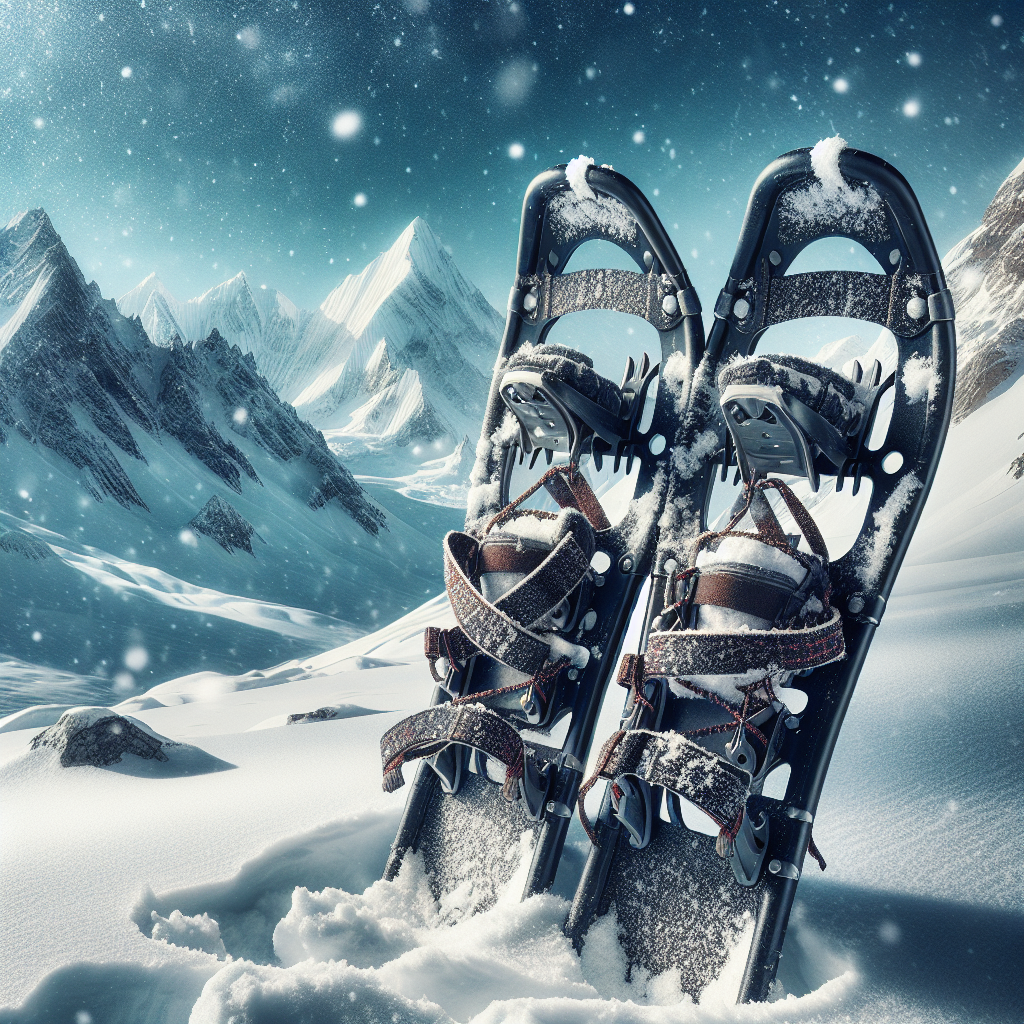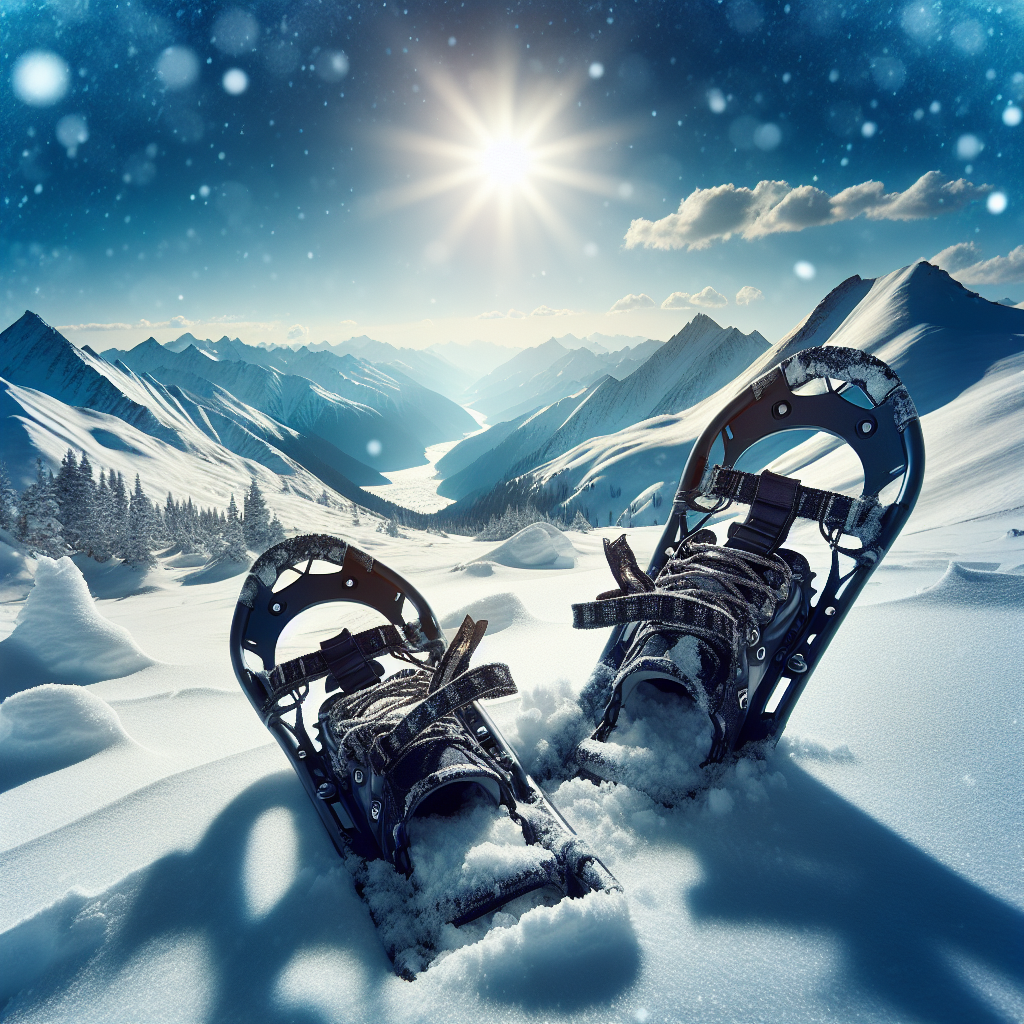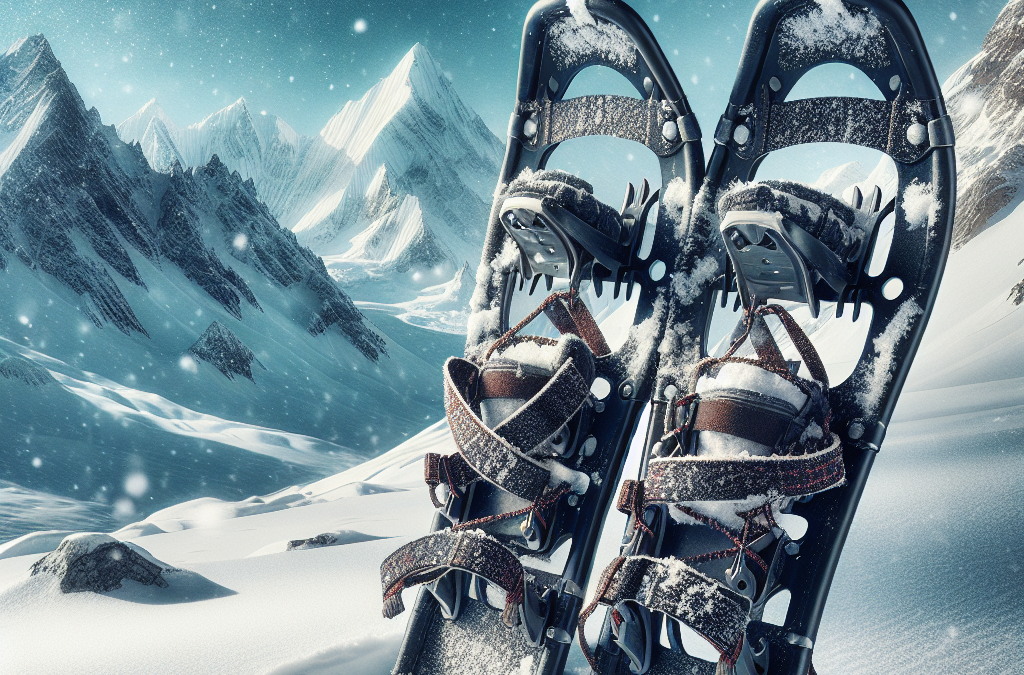Imagine stepping into a wintry landscape, blanketed in a pristine layer of snow, and embarking on a thrilling journey of discovery. “Snowshoeing: A Winter Wonderland Adventure” will skillfully guide you through the captivating and frosty world of snowshoeing. As you explore the bracing outdoors in its alabaster finery, you’ll uncover the essence of this exhilarating activity, its history and the essential gear needed to traverse snowy terrains. Strap on your snowshoes and prepare for a frosty adventure that blends scenic beauty with delightful exercise.

Understanding Snowshoeing
What is Snowshoeing
Snowshoeing is essentially hiking in the snow. Equipped with specially designed footwear known as snowshoes, you can spread your weight over a larger area to allow for easier movement on the snow. Light, durable, and designed to provide maximum grip, snowshoes make it accessible and comfortable to explore snowy landscapes that would otherwise be difficult, if not impossible, to traverse.
History of Snowshoeing
Believe it or not, snowshoeing isn’t a new practice. It has deep roots stretching back for thousands of years. Originally, snowshoes were essential tools for survival among tribes in snowy locales around the world. From the indigenous peoples of North America to the tribes of Central Asia, snowshoes were a critical part of winter life. They have evolved from simple bent wood and raw hide designs to the technical and lightweight models we use today.
Why Snowshoeing is Popular
There’s a good reason why snowshoeing is growing in popularity. It’s easy to learn, virtually anyone can do it, and, perhaps most importantly, it’s a highly enjoyable way to stay active during the winter months. It grants you access to serene and picturesque winter landscapes, and lets you experience the tranquillity of the wilderness in winter.
Preparing for Snowshoeing
Physical Preparation
While snowshoeing is a leisurely winter activity, it still requires a fair bit of physical exertion. Regular cardio exercise and strength training can prepare your body for the strains of trudging through snowy terrain. Keep in mind that you’ll be moving against the resistance of the snow underfoot, which demands more from your muscles than typical walking or hiking.
Essential Equipment
In addition to a sturdy pair of snowshoes, you’ll need a few other items to make your adventure safe and enjoyable. A pair of hiking poles will help you maintain balance and assist with uphill climbs. Don’t forget to pack a map and compass – even if you’re following established trails, they can be difficult to see in the snow.
Weather Considerations
Before heading out, it’s crucial to check the weather forecast. Remember, weather in winter can be unpredictable and may change suddenly. Be prepared for a variety of scenarios, such as heavy snowfall or a sudden drop in temperature.
Safety Measures in Snowshoeing
Orientation and Navigation
Regardless of your familiarity with the area, always carry a map, compass, and GPS device. Thick snow cover can make familiar landmarks unrecognizable and paths nonexistent, increasing the risk of getting lost.
Hypothermia and Frostbite Prevention
Remember to bundle up in layers before you venture outside and be mindful of the windchill. It’s critical that you’re able to adjust your clothing layers to prevent overheating and sweating, as wet clothes lose their insulation properties and are a leading cause of hypothermia.
Emergency and First Aid Preparedness
Carrying a basic first aid kit is always a good idea. It should include bandages, antiseptic wipes, tweezers, and any prescription medicines you or your fellow snowshoers might need. You never know when the unforeseen could happen, being prepared could mean the difference between a mishap or an emergency.
Techniques in Snowshoeing
Basic Movement
Unlike skiing or snowboarding, there’s no steep learning curve involved in snowshoeing. If you can walk, you can snowshoe. But remember, it does require a slightly wider gait than your regular stride to accommodate your snowshoes.
Climbing Hills
When ascending a hill, lean forward and plant your snowshoes at an angle to create a wider surface area. This means better grip and a decreased chance of slipping.
Descending Safely
Descending can be a bit tricky, especially on steeper hills. Lean back slightly, bend your knees, and make sure to put your heel down first. This will ensure you maintain control during your descent.

Choosing the Right Snowshoes
Snowshoe Types
There are several types of snowshoes – recreational, hiking and backcountry. Recreational snowshoes are perfect for beginners, while hiking and backcountry models are designed for more challenging terrains and longer outings.
Snowshoe Sizing
Remember, snowshoe size is determined not by your shoe size, but by your weight. Snowshoes spread your weight over the snow, the heavier you are, the larger your snowshoes need to be.
Choosing Based on Terrain and Usage
The terrain you plan to cover and your usage will also dictate the type of snowshoes you should choose. For flatter terrains and casual usage, recreational models are best. Hiking and backcountry models are better suited for rolling or steep terrains.
Clothing and Accessories for Snowshoeing
Selecting Appropriate Clothing
Remember, layering is key. Opt for moisture-wicking fabrics instead of cotton and adjust layers to mitigate sweating. Start with thermal underwear, add an insulating middle layer, like fleece, and finish with a waterproof and windproof shell.
Accessorizing for Comfort and Safety
Accessories like hats, gloves, scarves, and sunglasses can make your snowshoeing adventure much more enjoyable. Also, don’t forget sunscreen – the reflection from the snow can intensify sun exposure.
Footwear for Snowshoeing
For footwear, waterproof hiking boots are best. They provide the support and grip you need while keeping your feet dry and warm.
Snowshoeing Etiquette
Trail Etiquette
Respect others on the trail. Yield to downhill snowshoers and keep to the right when meeting oncomers. Stay on designated trails to avoid trampling flora and disturbing wildlife.
Environment and Wildlife Consideration
Minimize your impact on the environment. Carry out anything you carried in, avoid feeding wildlife, and steer clear of active nests or dens.
Privacy and Noise Restrictions
Remember that noise travels well in open, snowy landscapes. Keep noise levels to a minimum, especially around other snowshoers, and respect private properties near trails.
Challenges in Snowshoeing
Physical and Mental Challenges
Snowshoeing can be physically demanding, especially when covering challenging terrains or hiking long distances. It’s also mentally challenging as the monotony, cold, and isolation can be tough.
Difficult Weather Conditions
Weather is arguably the most significant challenge. Snowstorms and blizzards can impair visibility, and cold temperatures can be dangerous if not adequately prepared.
Overcoming Obstacles
Patience, preparedness, and a positive attitude are critical for overcoming challenges. Remember to pace yourself, keep hydrated, and always be prepared for changing conditions.
Benefits of Snowshoeing
Health and Fitness
Snowshoeing is a fantastic form of cardiovascular exercise. It burns more calories than walking or running at the same speed and can help improve balance and strength.
Mental Wellbeing
The serene and therapeutic winter landscapes can be a great source of peace and tranquility, helping to reduce stress and improve mood.
Exploring the Winter Wonderland
Last but not least, snowshoeing allows you to explore nature’s winter beauty in a way that is simply not possible using any other method.
Top Locations for Snowshoeing
Snowshoeing in North America
From the Rock Mountain National Park in Colorado to the Appalachian Trail, North America offers countless epic snowshoeing tours.
Europe’s Top Snowshoeing Destinations
The stunning Alpine trails of Switzerland and Italy to the rolling wilderness of Scandinavia, Europe offers diverse and breathtaking snowshoeing adventures.
Asia’s Unexplored Snowshoeing Locations
Asia might not be the first place you think of when planning a snowshoeing trip, but destinations like Japan and Nepal have beautiful, snow-clad landscapes which provide a unique snowshoeing experience.
In conclusion, snowshoeing is a delightful winter activity that allows you to explore nature, keep fit, and gain a refreshing perspective all at once. So why not give it a try? Grab a pair of snowshoes and start your winter adventure!

